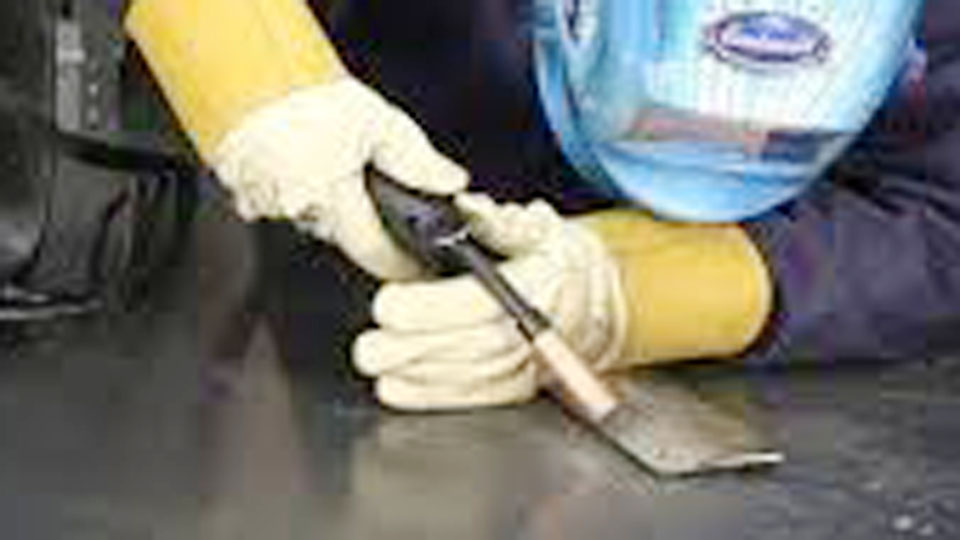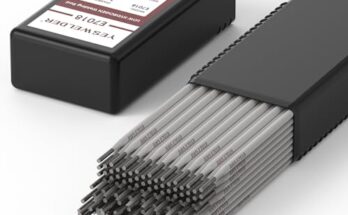When I started my welding journey, the thought of using a no-gas MIG welder was both exciting and a little intimidating. The idea of skipping the hassle of gas tanks and regulators sounded appealing, especially as someone who wanted to dive into the craft without too much setup. But I had questions: Would it be easy to use? Could I still create strong, clean welds? And most importantly, was this really the right option for me as a beginner?

Image by makemoneywelding
If you’re here, you’re probably asking the same things. The good news is that no-gas MIG welding is not only possible but also an excellent starting point for anyone new to welding. I’ll share everything I’ve learned about using a no-gas MIG welder, from what it is and how it works to tips for getting the best results.
What Is a No Gas MIG Welder?
Let’s start with the basics. A no-gas MIG welder, often referred to as a flux-cored welder, uses a special type of wire called flux-cored wire. Unlike traditional MIG welding, which relies on an external shielding gas to protect the weld pool from contamination, flux-cored wire has a built-in flux that creates its own shielding.
This means you don’t need a gas cylinder, regulator, or any of the extra equipment that typically comes with MIG welding. Instead, you just need the welder, the wire, and your workpiece.
Why Choose a No Gas MIG Welder as a Beginner?
There are a few reasons why a no-gas MIG welder is a great choice for beginners:
- Simplicity: Without the need for gas cylinders, the setup is straightforward and less intimidating.
- Portability: No gas tanks mean you can easily move your welder around, making it ideal for outdoor projects.
- Cost-Effective: Gas equipment can add up in cost, so skipping it saves money upfront.
- Versatility: A no-gas MIG welder works well in outdoor or windy conditions where shielding gas might be blown away.
Understanding the Flux-Cored Wire
Flux-cored wire is the heart of no-gas MIG welding. If you’ve never used it before, here’s what you need to know:
- How It Works: The wire contains a flux core that melts during welding, creating a gas shield to protect the weld.
- Types of Wire: Flux-cored wire comes in different varieties. For beginners, an E71T-11 wire is a popular choice for general use.
- Material Compatibility: Flux-cored wire can be used on materials like mild steel and stainless steel, making it versatile for beginners.
Tools and Materials You’ll Need
Before you get started, make sure you have the right tools and materials. Here’s a quick checklist:
| Item | Purpose |
|---|---|
| No-Gas MIG Welder | Your main tool for welding. |
| Flux-Cored Wire | The wire that creates its own shielding. |
| Protective Gear | Helmet, gloves, jacket, and safety boots. |
| Workpiece | The material you’ll be welding (e.g., mild steel). |
| Wire Brush or Grinder | For cleaning the surface before welding. |
| Clamps or Vice | To secure your workpiece in place. |
Having everything prepared will make your welding experience smoother and safer.
How to Set Up a No Gas MIG Welder
Setting up a no-gas MIG welder is straightforward. Here’s how I do it:
Choose the Right Wire
Make sure you’re using flux-cored wire that matches your project. Check the diameter of the wire and ensure your welder is compatible with it.
Set the Polarity
For flux-cored welding, you’ll need to set your welder to DC Electrode Negative (DCEN). This is crucial for proper welding performance.
Adjust the Wire Feed Speed
The wire feed speed controls how quickly the wire is fed into the weld. Too fast, and you’ll get spatter. Too slow, and the weld won’t hold properly.
Set the Voltage
Match the voltage setting to your material’s thickness. Most welders have a guide printed on the machine or in the manual.
Test on Scrap Metal
Before diving into your project, test your settings on a piece of scrap metal. This will help you fine-tune the parameters.
Welding Techniques for Beginners
Welding with a no-gas MIG welder requires some practice, but with a few tips, you’ll get the hang of it:
Maintain a Steady Hand
Hold the welding gun at a consistent angle, typically around 15-20 degrees. This ensures a smooth weld bead.
Watch the Weld Pool
Pay close attention to the weld pool as you move. A steady pool means your settings are correct.
Move at the Right Speed
Move the gun at a steady pace. Going too fast will result in a weak weld, while going too slow can cause burn-through.
Keep Your Workpiece Clean
Dirt, grease, and rust can ruin your weld. Use a wire brush or grinder to clean the surface before starting.
Common Mistakes to Avoid
As a beginner, it’s easy to make mistakes, but knowing what to watch out for can save you time and frustration:
- Incorrect Polarity: Forgetting to set the welder to DCEN is a common mistake.
- Using the Wrong Wire: Make sure your wire matches the material you’re welding.
- Poor Preparation: Failing to clean the workpiece can lead to poor weld quality.
- Inconsistent Movement: Practice maintaining a steady pace and angle.
Advantages of No Gas MIG Welding
- Cost Savings: No need for gas cylinders or regulators.
- Flexibility: Works well in outdoor environments.
- Beginner-Friendly: Simplified setup and operation.
Limitations of No Gas MIG Welding
While it’s a great option for beginners, no-gas MIG welding does have its limitations:
- More Spatter: Flux-cored welding tends to produce more spatter compared to traditional MIG welding.
- Limited Material Options: It’s best suited for mild steel and stainless steel but not ideal for aluminum.
- Aesthetic Finish: The welds may not look as clean as those made with gas shielding.
Choosing the Right No Gas MIG Welder
When picking a welder, look for features that cater to beginners:
- Ease of Use: Simple controls and setup.
- Durability: A sturdy build that can handle regular use.
- Portability: Lightweight and easy to move.
- Compatibility: Supports flux-cored wire.
Conclusion
No-gas MIG welding is an excellent starting point for beginners looking to explore welding. It’s cost-effective, portable, and simple to set up, making it a practical option for hobbyists and DIY enthusiasts alike. While it comes with some challenges, like increased spatter and limited material options, the benefits far outweigh the drawbacks for someone just starting out.
If you’re willing to practice and put in the effort, you’ll be able to create strong, reliable welds in no time. Remember, the key is preparation, patience, and a willingness to learn. So grab your no-gas MIG welder and start experimenting—you might just discover a new passion.
FAQs
Can I weld aluminum with a no-gas MIG welder?
No, flux-cored wire is not suitable for aluminum. You’ll need a traditional MIG welder with shielding gas for that.
Is no-gas MIG welding good for outdoor projects?
Yes, it’s ideal for outdoor environments where wind might blow away shielding gas.
What thickness of material can I weld with a no-gas MIG welder?
Most no-gas MIG welders can handle mild steel up to 1/4 inch thick, but check your machine’s specifications.
How do I reduce spatter when welding without gas?
Use the correct wire, adjust your settings, and practice maintaining a steady hand.
Is a no-gas MIG welder suitable for professional use?
While it’s great for beginners and DIY projects, it may not meet the standards required for professional work.
